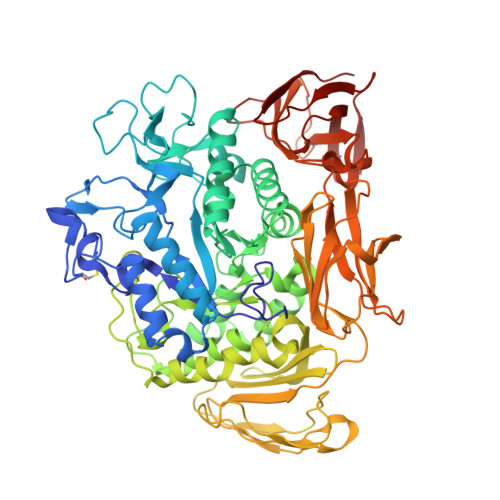The fully conserved Asp residue in Conserved sequence region I of the alpha-amylase Family is crucial for the Catalytic Site Architecture and Activity
Leemhuis, H., Rozeboom, H.J., Dijkstra, B.W., Dijkhuizen, L.(2003) FEBS Lett 541: 47-51
- PubMed: 12706817
- DOI: https://doi.org/10.1016/s0014-5793(03)00286-2
- Primary Citation of Related Structures:
1OT1, 1OT2 - PubMed Abstract:
The alpha-amylase family is a large group of starch processing enzymes [Svensson, B. (1994) Plant Mol. Biol. 25, 141-157]. It is characterized by four short sequence motifs that contain the seven fully conserved amino acid residues in this family: two catalytic carboxylic acid residues and four substrate binding residues. The seventh conserved residue (Asp135) has no direct interactions with either substrates or products, but it is hydrogen-bonded to Arg227, which does bind the substrate in the catalytic site. Using cyclodextrin glycosyltransferase as an example, this paper provides for the first time definite biochemical and structural evidence that Asp135 is required for the proper conformation of several catalytic site residues and therefore for activity.
- Department of Microbiology, Groningen Biomolecular Sciences and Biotechnology Institute (GBB), University of Groningen, Kerklaan 30, 9751 NN Haren, The Netherlands.
Organizational Affiliation:

























